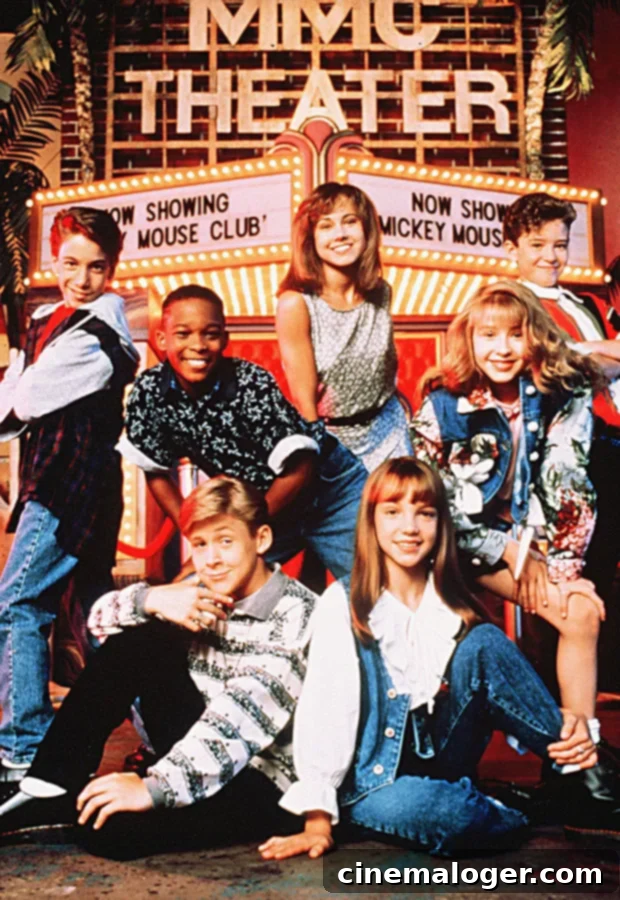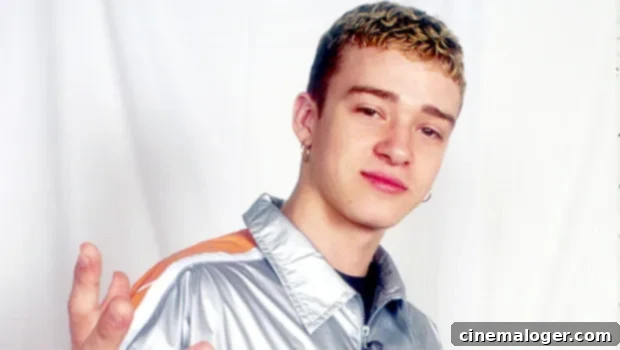Justin Timberlake’s Unfiltered Teenage Years: From Mickey Mouse Club to First Encounters with Rebellion
Global superstar Justin Timberlake has openly shared insights into his formative years, revealing a period of significant personal upheaval following the cancellation of Disney’s iconic television show, The Mickey Mouse Club, in 1994. At the tender age of 13, Timberlake, along with his fellow castmates, was suddenly thrust back into a more conventional existence after experiencing the unique world of child stardom. This abrupt transition, as detailed in his deeply personal memoir, Hindsight: And All the Things I Can’t See in Front of Me, sparked a phase of rebellion and self-discovery, leading to experiences that profoundly shaped the artist he would become. His candid confessions shed light on the pressures of celebrity at a young age and the challenging journey of finding oneself amidst a changing landscape.
The memoir recounts how, after two seasons on The Mickey Mouse Club, Timberlake found himself back in his hometown of Memphis, Tennessee. The contrast between the glamorous, high-energy world of television production and the everyday routine of public school life was stark. While his time on the show had undoubtedly broadened his horizons, leaving him “a lot more sophisticated and aware” than his peers, he yearned for normalcy. This desire to fit in, to shed the aura of a child star, often manifested in unexpected ways. Rather than embracing his unique experiences, he actively sought to downplay them, a common coping mechanism for young people who feel different. This period marked the beginning of a challenging quest for identity, as he navigated the complexities of adolescence under the shadow of past fame.
Timberlake describes how his attempts to assimilate led him down a path of acting out. “I became the class clown,” he writes, “disrupting class with my bits, not caring if the teachers were mad, only wanting to be accepted by the other kids.” This behavior, born from a deep-seated need for peer validation, was just one symptom of his internal struggle. More significantly, he began experimenting with substances. “I started getting in trouble. I smoked pot for the first time,” he revealed, marking a significant, albeit rebellious, milestone in his teenage years. The experimentation didn’t stop there; he also recounted acquiring “a can of tobacco” which nearly led to his expulsion from school. These incidents paint a vivid picture of a young Justin Timberlake grappling with the absence of the structured, creative outlet that The Mickey Mouse Club had provided, searching for a new sense of belonging and excitement in less conventional avenues.
The revelations in Hindsight offer a rare glimpse into the formative experiences of a star who has largely maintained a polished public image. His honesty about these early transgressions resonates with many who have experienced similar adolescent turmoil, albeit without the added layer of child stardom. The sudden shift from being on a popular television show alongside future industry titans like Christina Aguilera, Britney Spears, and Ryan Gosling, to returning to a typical school environment, must have been disorienting. This period of acting out was, in many ways, a testament to his struggle to process a unique past while attempting to forge a new, relatable identity amongst his peers. It highlights the often-overlooked psychological impact of growing up in the public eye and then having that spotlight abruptly dim.
Despite the challenges, Timberlake’s time on The Mickey Mouse Club was also a period of profound connection and camaraderie. He formed particularly close bonds with his fellow cast members, a testament to the shared, extraordinary experience they were all undergoing. Among these friendships, his connection with Ryan Gosling stands out. The two boys, who would both go on to achieve immense success in Hollywood, found mischief and solace in each other’s company. Timberlake fondly recalls their escapades, particularly those involving their access to the famed Walt Disney World theme parks in Florida, where the show was filmed. “We had employee cards that gave us access to the theme parks for free,” he recounted. “Ryan and I once stole a golf cart and drove it to the employee entrance for the Tower Of Terror. We went on that ride 12 times in a row.” This anecdote not only illustrates the mischievous spirit of young boys but also highlights the unique privileges and unsupervised freedom that often came with being a child star on the Disney lot. These shared moments of youthful rebellion and adventure undoubtedly strengthened a bond that has endured throughout their respective careers, even as their paths diverged.

Beyond the friendships and rebellious antics, The Mickey Mouse Club also laid the groundwork for one of the most high-profile romantic relationships of the late 90s and early 2000s. A few years after the show’s cancellation, Timberlake reconnected with another former castmate, Britney Spears. Their relationship, which began in 1998, quickly captivated the public imagination, solidifying their status as pop music’s golden couple. Both having launched incredibly successful solo careers, their romance was often seen as a fairytale union of two of the biggest teen idols of their generation. Their matching denim outfits at the 2001 American Music Awards became an iconic pop culture moment, emblematic of their shared reign at the top of the music world. The intense public scrutiny and the sheer scale of their celebrity made their relationship a constant topic of discussion and fascination for fans and media alike.
However, like many high-profile romances, theirs was not destined to last. When Timberlake and Spears ultimately broke up in 2002, the news sent shockwaves through the entertainment industry and left countless fans heartbroken. The aftermath of their split was highly publicized, with both artists eventually releasing music that seemed to reference their separation. Timberlake’s contribution to this narrative came in the form of his seminal hit, “Cry Me A River.” In his memoir, he confirmed the song’s direct inspiration, revealing the astonishing speed with which it was created. “I wrote his hit song, ‘Cry Me A River’ just two hours after the split,” he detailed, highlighting the raw and immediate emotional impact the breakup had on him. This revelation underscores the profound way in which personal experiences often fuel artistic creation, turning pain into powerful, relatable art.
Of the breakup ballad, Timberlake wrote, “I’ve been scorned. I’ve been pissed off. The feelings I had were so strong I had to write it.” This candid admission reveals the intense emotional turmoil he experienced, translating heartbreak and anger into a timeless track. He further explained his artistic process and the universal appeal of the song: “I translated my feelings into a form where people could listen and hopefully relate to it. People heard me and they understood it because we’ve all been there.” “Cry Me A River” not only became one of his most successful singles but also an anthem for heartbreak, resonating with millions who had experienced similar feelings of betrayal and loss. The song’s evocative lyrics and groundbreaking music video, which subtly hinted at infidelity, fueled public speculation about the reasons behind the famous couple’s split, further cementing its place in pop culture history.
Looking back through the lens of his memoir, Timberlake’s willingness to share these vulnerable aspects of his youth offers a richer understanding of his journey. From a 13-year-old grappling with post-child-star life and navigating teenage rebellion to a global icon expressing profound heartbreak through his music, his story is one of constant evolution. These early experiences, both challenging and defining, illustrate the complexities of growing up under the public eye and the enduring human quest for identity, acceptance, and emotional expression. His reflections remind us that even the most celebrated figures have had to overcome personal struggles and find their voice, both in life and in their art.
